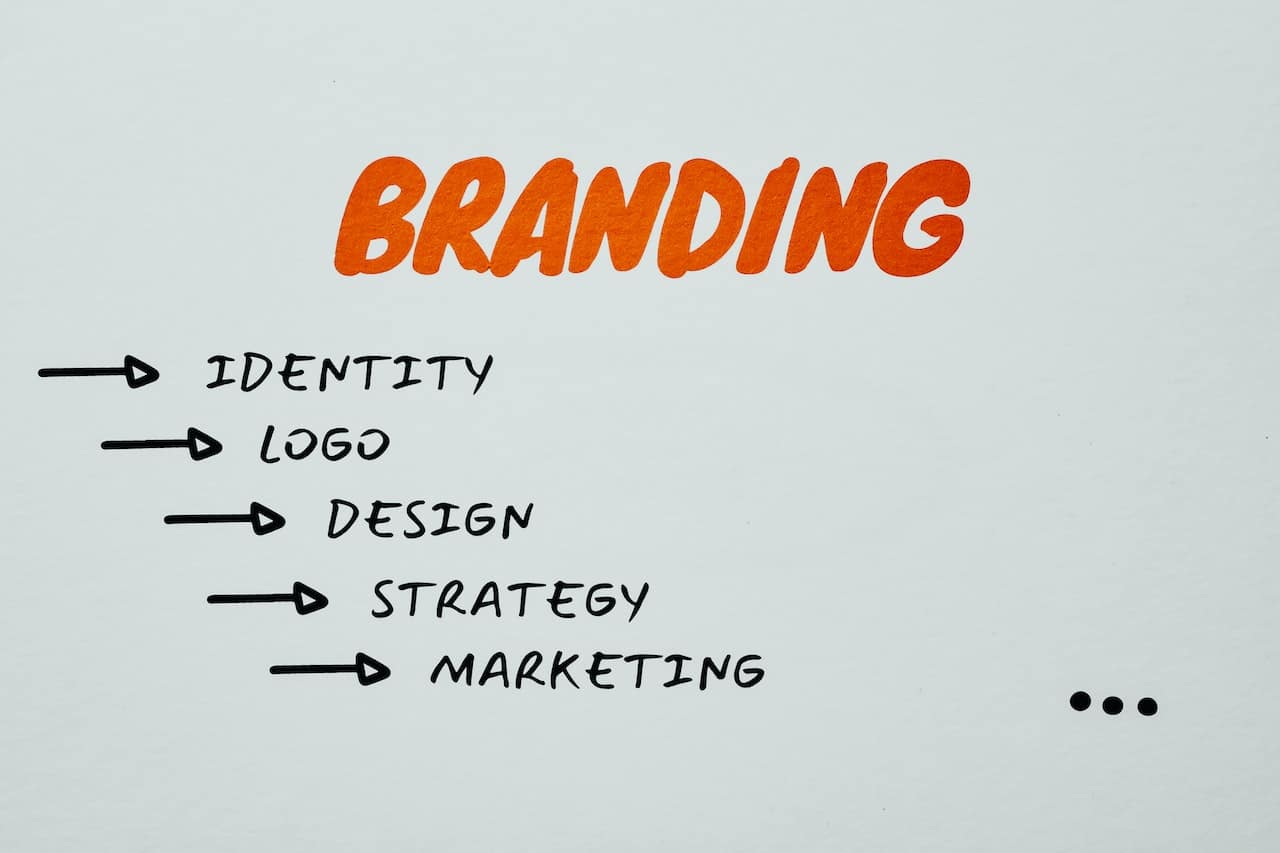In today’s competitive market, establishing a strong and unique brand identity is crucial for any therapy practice. Your brand is the foundation for your practice, influencing how potential clients perceive your services. Crafting a compelling identity that reflects your expertise, values, and the unique experience you offer is key to attracting and connecting with your target audience. This article will explore effective strategies to help you brand your therapy practice successfully.
KEY TAKEAWAYS
-
Understand your target audience to tailor your branding effectively.
-
Define your practice’s core values as a foundation for your brand.
-
Create a memorable practice name and logo.
-
Craft a compelling brand story that reflects your unique approach and values.
-
Design a user-friendly website to showcase your practice.
-
Maintain consistency across online and offline channels for a cohesive brand.
-
Utilize social media to increase visibility and engage with your audience.
-
Foster positive client experiences through a welcoming environment and personalized treatment.

8 Unique Steps to Branding Your Therapy Practice: A Complete Guide
Branding is vital for your therapy practice’s success, but standing out in the competitive landscape requires unique strategies. This article explores eight distinctive steps to help you craft a compelling brand. From understanding your audience to developing a memorable brand story, these steps will guide you toward creating an impactful identity for your therapy practice. Before starting, if you’re new, here’s a cool guide on expanding your therapy practice. Let’s dive in and discover these unique branding strategies for your therapy private practice.
1. Understanding Your Target Audience

To create a compelling brand identity, it is essential to have a deep understanding of your target audience. Consider their demographics, preferences, and challenges they may be facing. By understanding your audience, you can tailor your brand message to resonate with them effectively.
Here are some key points to consider when understanding your target audience:
a. Demographics: Start by identifying the key demographic characteristics of your ideal clients. Consider factors such as age, gender, location, occupation, and income level. This information will help you shape your brand identity and communication strategies to appeal to your target demographic.
b. Psychographics: Psychographics delve deeper into your target audience’s psychological and behavioral aspects. Try to understand their values, beliefs, motivations, and interests. This knowledge enables you to create brand messaging that speaks directly to their needs and aspirations.
c. Pain Points: Identify your target audience’s challenges, concerns, and pain points. This could include mental health issues, relationship problems, stress, or specific therapy-related needs. Understanding their pain points allows you to position your practice as a solution and effectively communicate your services’ benefits.
d. Communication Preferences: Determine the communication channels your target audience prefers. How do you accommodate their preferences? Are they active on social media platforms? Do they prefer email communication or phone calls? Knowing their preferred channels helps you tailor your marketing efforts to reach them more effectively.
e. Competition Analysis: Research your competitors to gain insights into their target audience and how they position themselves. Identify gaps or opportunities in the market that you can leverage to differentiate your private practice. By understanding what your competitors offer, you can refine your brand identity to stand out in the crowded therapy industry.
f. Conduct Surveys or Interviews: Engage directly with your existing clients or potential clients through surveys or interviews. Ask them about their needs, expectations, and experiences with therapy. This firsthand feedback provides valuable insights that can shape your branding strategies.
g. Test and Refine: As you gather data and insights about your target audience, continuously test and refine your brand messaging and strategies. Monitor the response to your marketing efforts and adjust as needed to ensure you effectively reach and engage your target audience.
Read our guide to learn more about creating a great business plan for your practice.
Actionable Tip #1
When starting out, we used blogs and youtube videos for advice. You may also want to consider hiring a marketing agency to understand a professional’s approach.
2. Define Your Practice’s Core Values

Identifying and defining your practice’s core values is fundamental to building a strong brand identity. These values should align with your personal beliefs and reflect the approach you take in your therapeutic work. Consider the principles that guide your practice, such as empathy, respect, and collaboration. Craft a clear and concise mission statement that embodies these values.
Here’s a more in-depth look at the importance of defining your practice’s core values:
Establishing Identity and Differentiation: Core values help differentiate your therapy practice from others in the field. They reflect your unique perspective, beliefs, and philosophy. Potential clients who resonate with your values are more likely to choose your private practice over competitors. Clearly defining your core values allows you to carve out a distinct identity that sets you apart.
Attracting Your Ideal Clients: Core values act as a magnet for attracting clients who align with your beliefs and therapeutic approach. When your values resonate with your target audience, they feel a stronger connection and sense of trust in your practice. Clients are more likely to seek your services when they feel that you share common values and will understand their needs. Here’s an article on how to market your practice and get new clients.
Guiding Decision-Making and Practice Culture: Core values serve as a compass for making important decisions in your practice. They provide a framework for setting goals, defining strategies, and shaping the overall culture of your practice. When your values are integrated into every aspect of your practice, from client interactions to business practices, they create consistency and cohesiveness.
Enhancing Professional Satisfaction: Aligning your private practice with your core values leads to greater professional satisfaction. When your work aligns with your beliefs and values, you experience a sense of purpose and fulfillment. This positively impacts your motivation, energy, and dedication, enhancing the quality of care you provide to your clients.
Building Trust and Credibility: Clearly defined core values build client trust and credibility. When your values are communicated effectively, it helps potential clients understand the principles that guide your practice. They see your commitment to ethical practices, empathy, inclusivity, or any other core values you uphold. This transparency builds trust and confidence in your expertise and integrity.
Consistency in Brand Messaging: Core values serve as a foundation for developing consistent brand messaging. They inform the tone, language, and content of your marketing materials, website, and social media presence. By consistently communicating your values, you reinforce your brand identity and create a cohesive brand experience for clients.
Engaging and Retaining Clients: When your core values align with those of your clients, it fosters a deeper connection and loyalty. Clients who resonate with your values are more likely to engage in long-term therapy and refer others to your practice. Building a community of clients who share your values creates a supportive and nurturing environment.
Actionable Tip #2
Include your mission on your website. We have had many patients and prospective employees comment about how that was helpful to understand our company.
3. Develop a Memorable Practice Name and Logo

A memorable practice name and logo are essential elements of your brand identity. Your practice name should be concise, easy to remember, and reflect your therapeutic focus. Aim for simplicity and clarity while incorporating elements that symbolize your practice’s values when designing your logo. Consider seeking professional help from graphic designers to ensure your logo effectively represents your practice.
-
Concise and Memorable: Choose a practice name that is easy to remember and reflects your therapeutic focus.
-
Reflective of Values: Ensure that your practice name aligns with your core values and the services you provide.
-
Professional Design: Create a visually appealing logo that represents your practice’s identity and resonates with your target audience.
-
Simplicity and Clarity: Keep the logo design simple and easily recognizable.
-
Seek Professional Help: Consider hiring a graphic designer or branding expert to assist in creating a memorable and visually appealing logo.
-
Consistency: Use your practice name and logo consistently across all branding materials to build recognition and reinforce your brand identity.
According to a survey, 48% of consumers say a logo is a business’s most memorable aspect. (Source: Crowdspring)
Actionable Tip #3
A name that captures the intent of the search will help you with SEO. For example, include “therapy” if you feel your audience will often search for this term.
4. Craft a Compelling Brand Story

Telling your brand story is an effective way to engage potential clients and differentiate yourself from competitors. Share your journey, motivations, and experiences leading to becoming a therapist. Highlight how your unique background and approach can benefit clients. Craft your brand story in a warm, authentic tone to establish a connection with readers.
Here’s the importance of crafting a compelling brand story:
-
Establishing Authenticity
-
Building Trust and Relatability
-
Setting You Apart from Competitors
-
Inspiring and Motivating Clients
-
Creating an Emotional Connection
-
Engaging in Marketing and Content Creation
Here are some steps to help you create a compelling brand story for your therapy practice:
Reflect on Your Journey: Begin by reflecting on your personal and professional journey that led you to become a therapist. Consider the experiences, challenges, and turning points that shaped your path. Identify key moments or realizations that influenced your decision to pursue therapy as a profession.
Identify Your Unique Perspective: Think about what sets you apart as a therapist. Consider your therapeutic approach, expertise, and any specialized training or certifications you have acquired. Identify the unique perspective you bring to the table and how it benefits your clients.
Define Your Values and Mission: Clarify your core values as a therapist. What principles guide your practice, and how do they influence your work with clients? Craft a clear and concise mission statement that encapsulates your purpose and the impact you aim to make in your client’s lives.
Connect Emotionally: Your brand story should evoke emotions and resonate with your target audience. Identify the emotions you want your brand story to evoke, such as hope, empathy, or inspiration. Share personal anecdotes or stories of client transformations that highlight therapy’s positive impact.
Be Authentic and Transparent: Authenticity is key to a compelling brand story. Be genuine and transparent about your own vulnerabilities and struggles. Sharing your authentic journey creates a relatable connection and builds trust with the ideal client.
Tailor to Your Target Audience: Consider your target audience and tailor your brand story to resonate with them. Understand their needs, concerns, and aspirations. Highlight how your unique journey and expertise align with their specific challenges and how you can support them in their therapeutic journey.
Actionable Tip #4
Google search algorithm changes have promoted EAT: expertise, authority, and trust. Create content that you feel is who you are (authentic), that showcases your experience (expertise), and promotes transparency (trust).
5. Design a User-Friendly Website

Your website serves as a virtual front door to your therapy practice. Design a clean and professional website that reflects your brand identity. Ensure it is mobile-friendly, easy to navigate, and visually appealing. Include essential information such as your services, credentials, testimonials, and contact details. Utilize high-quality imagery that resonates with your target audience.
Here are key points to consider when designing a user-friendly website:
Clear Navigation: Organize your website with a clear and intuitive navigation menu that helps visitors find the information they are looking for quickly and easily.
Simple Layout and Design: Use a clean and visually appealing design that is easy on the eyes. Avoid clutter and excessive use of colors or fonts that may distract or confuse visitors.
Mobile Responsiveness: Ensure your website is mobile-friendly and responsive, adapting seamlessly to different devices and screen sizes. This allows visitors to access your website and navigate comfortably on smartphones and tablets.
Clear and Concise Content: Present your content in a clear and concise manner. Use headings, bullet points, and short paragraphs to make it easy for visitors to skim and absorb information.
Contact Information and Calls-to-Action: Display your contact information prominently, making it easy for visitors to get in touch with you. Include clear calls-to-action to encourage visitor engagement, such as appointment booking buttons or inquiry forms.
Fast Loading Speed: Optimize your website’s loading speed to ensure a smooth and frustration-free user experience. Compress images, minify code, and use caching techniques to improve loading times.
Accessibility: Ensure your website is accessible to all visitors, including those with disabilities. Consider features such as alt tags for images, descriptive text for links, and proper heading structure for easy navigation using screen readers.
Trust Indicators: Include trust indicators such as client testimonials, certifications, or affiliations to build credibility and instill confidence in your services.
Regular Updates: Keep your website up to date with fresh content, relevant information, and any changes to your services or contact details. Regularly review and optimize your website for improved performance and user experience.
Actionable Tip #5
Instead of paid ads, consider spending extra on SEO tools that would help you optimize your website speed, such as a content delivery network, code minifying, and image optimization.
6. Consistency across Online and Offline Channels

Consistency is key when it comes to branding. Maintain a consistent brand experience across all online and offline channels. Use the same logo, colors, fonts, and tone of voice on your website, social media profiles, business cards, and marketing materials. Consistency builds trust and reinforces your brand identity in the minds of the ideal client.
Key benefits include Brand Identity, Professionalism, Recognition and Recall, Reinforcing Messages, Seamless Experience, Increased Engagement, Marketing Efficiency, and Positive User Experience.
Here’s how you can maintain Consistency across Online and Offline Channels:
Define Brand Guidelines: Establish clear brand guidelines that outline your visual identity, including logo usage, color palette, typography, and imagery style. These guidelines serve as a reference for maintaining consistency across all channels.
Use Consistent Branding Elements: Ensure that your branding elements, such as logo, tagline, and brand colors, are used consistently across all online and offline materials. This includes your website, social media profiles, print materials, signage, business cards, and any other touchpoints.
Maintain a Unified Tone and Voice: Develop a consistent tone and voice for your brand that reflects your therapy practice’s personality and values. Whether in written content, social media posts, or in-person interactions, maintain a consistent tone that aligns with your brand identity.
Carry Design Elements Across Channels: Extend your visual design elements from your website to your social media profiles, email newsletters, and printed materials. This can include using similar color schemes, typography, and imagery to create a cohesive visual experience.
Align Messaging and Content: Ensure that the messaging and content you share across online and offline channels are aligned. Keep your brand story, mission, and key messages consistent, reinforcing your practice’s values and unique selling points.
Train Staff and Team Members: Educate your staff and team members about your brand guidelines, tone of voice, and messaging. Ensure that everyone representing your practice, online and offline, understands and adheres to these guidelines to maintain consistency.
Regularly Review and Update: Periodically review your online and offline materials to ensure they remain consistent and up to date. This includes reviewing your website, social media profiles, print materials, and any other touchpoints for inconsistencies or outdated information.
Coordinate Marketing Campaigns: Plan and coordinate your marketing campaigns across online and offline channels to ensure a consistent message and visual identity. Align your promotional materials, advertising, and digital marketing efforts to create a cohesive campaign experience.
Monitor and Respond to Feedback: Pay attention to client feedback and comments across different channels. Address any concerns or inconsistencies promptly and use the feedback to improve and maintain consistency in your branding and messaging.
To get further knowledge, you can read our guide on building a support network for your private practice.
Actionable Tip #6
When working with a graphic designer to develop your logo, ask for the product in a variety of different image formats, resolution, and color paletes (such as for black and white medium).
7. Embrace Social Media

Social media platforms provide excellent opportunities to build your brand identity and engage with your audience. Choose platforms that align with your target audience’s preferences and create compelling content that adds value. Share tips, inspirational quotes, relevant articles, and success stories to establish yourself as an authority in your field.
Here are a few key steps that you can follow:
Set Clear Goals: Define your objectives for using social media. Determine what you want to achieve, such as increasing brand awareness, driving website traffic, or engaging with your target audience. Setting clear goals will guide your social media strategy.
Choose Relevant Platforms: Identify the social media platforms that align with your target audience and business goals. Popular platforms for therapists include Facebook, Instagram, Twitter, LinkedIn, and YouTube. Focus on the platforms where your ideal client is most active.
Develop a Content Strategy: Plan and create content that resonates with your target audience. Provide valuable information, share helpful resources, and offer insights into mental health and therapy. Mix different types of content, including educational posts, inspirational quotes, testimonials, and videos.
Consistency and Frequency: Maintain a consistent presence on social media by posting regularly. Create a content calendar to schedule your posts and maintain a consistent frequency. Aim for quality rather than quantity, focusing on delivering meaningful content to your audience.
Engage with Your Audience: Actively engage with your followers by promptly responding to comments, messages, and inquiries. Encourage conversations, ask questions, and participate in relevant discussions. Show genuine interest and provide valuable insights to build relationships with your audience.
Actionable Tip #7
Producing high quality content on social media on a regular basis for a long term is very difficult. Consider hiring a social media manager.
8. Foster Positive Client Experiences

Delivering exceptional client experiences is vital for building a strong brand reputation. Provide a warm and welcoming environment in your private practice. Listen actively to your clients, empathize with their concerns, and deliver personalized treatment plans. Encourage clients to provide testimonials and online reviews to showcase your expertise and build trust with the ideal client.
Create a Welcoming Environment: Ensure your therapy space is comfortable, inviting, and conducive to a safe and confidential atmosphere. Pay attention to your office’s ambiance, cleanliness, and privacy to make clients feel welcomed and at ease.
Build Rapport and Trust: Establish a strong therapeutic relationship with your clients based on trust, empathy, and understanding. Show genuine interest in their concerns, actively listen to their stories, and validate their experiences. Create a non-judgmental and supportive environment where clients feel comfortable sharing and opening up.
Effective Communication: Maintain clear and open communication with your clients. Explain therapy processes, expectations, and confidentiality policies from the beginning. Use plain language and ensure clients understand the therapeutic journey, treatment plans, and progress. Encourage clients to ask questions and provide regular updates on their progress.
Personalize Treatment Plans: Tailor your therapy approach to each client’s unique needs and goals. Conduct thorough assessments and collaborate with clients to co-create personalized treatment plans. Involve clients in decision-making, allowing them to participate in their therapeutic journey actively.
Empowerment and Autonomy: Foster client empowerment and autonomy by encouraging active therapy involvement. Provide tools, resources, and self-care techniques that clients can practice outside sessions. Help clients identify and build on their strengths, promoting self-empowerment and resilience.
Timely and Respectful Scheduling: Respect clients’ time and schedule appointments in a timely manner. Be punctual and minimize wait times. If adjustments need to be made, communicate promptly and reschedule as necessary while being mindful of clients’ availability and preferences.
Continuity of Care: Ensure continuity of care by establishing a structured and consistent therapeutic process. If needed, develop clear treatment plans, maintain accurate and organized client records, and ensure smooth transitions between sessions or therapists.
Follow Ethical Guidelines: Adhere to ethical guidelines and maintain professional boundaries. Respect clients’ privacy, confidentiality, and rights. Provide a safe and ethical practice environment that instills confidence and trust in your clients.
Actionable Tip #8
Following the above suggestions will lead you to one of your most important referral sources: the word of mouth referral. Don’t underestimate the cost effectiveness of word of mouth referrals.
Summary
Crafting a compelling brand identity for your therapy practice is an ongoing process that requires careful consideration and attention to detail. By understanding your target audience, defining your core values, and developing a consistent brand presence, you can establish an identity that resonates with clients and sets you apart from the competition. Remember, a strong brand communicates trust, expertise, and compassion, enabling you to attract and connect with prospective clients who benefit from your therapeutic services.

 Bruce Bassi
Bruce Bassi





